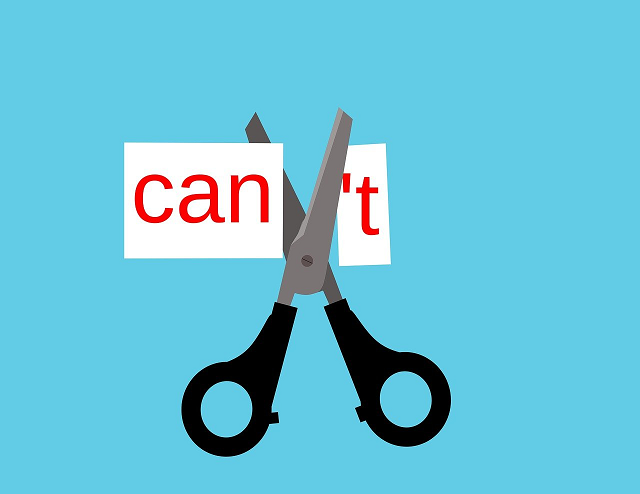Step-by-Step Strategies To Unlock Unshakable Confidence
Confidence isn’t a mysterious trait reserved for the lucky few—it’s a skill, built like a muscle, one habit at a time. James Clear’s atomic habits framework reveals that small, consistent changes lead to remarkable transformations. Pair this with the psychological strategy of chunking—breaking large tasks into manageable steps—and you have a roadmap for creating unshakable confidence.
Let’s delve into how atomic habits and chunking can help you foster habits that build confidence organically, sustainably, and practically.
Small Habits, Big Confidence
James Clear emphasizes the power of starting small. Confidence doesn’t come from occasional monumental victories; it stems from the quiet, consistent acts that reinforce your belief in yourself. These micro-wins accumulate over time, proving to your subconscious that you’re capable, resilient, and ready to take on challenges.
Instead of saying, “I’ll become confident in public speaking,” reframe your goal to, “I’ll speak for two minutes in front of a mirror daily.” This tiny, non-threatening habit not only feels manageable but also bypasses the fear of failure that often accompanies ambitious resolutions. Over time, this two-minute practice evolves into full-fledged public speaking prowess.
The Science Behind Chunking
Chunking is the process of breaking overwhelming tasks into bite-sized, approachable steps. Imagine being tasked with climbing a mountain. Thinking about the summit may feel paralyzing. But if you focus only on reaching the next checkpoint, the journey becomes less daunting.
Psychologically, chunking reduces cognitive overload, making it easier to take action. The brain loves patterns and manageable units, which is why dividing a goal into small, actionable chunks removes barriers to starting. Each step completed reinforces a sense of progress, triggering dopamine rewards that encourage continued effort.
Step 1: Identify a Keystone Habit
In Clear’s framework, a keystone habit is the domino that knocks over the rest. It’s a single, powerful habit that sparks a chain reaction of positive behaviors. For confidence, this could be as simple as making your bed every morning.
How does this small act build confidence? It sends a signal to your brain that you’re in control. This sense of agency transfers to other areas of life. Suddenly, you’re not just someone who makes their bed—you’re someone who starts their day with purpose and capability.
Step 2: Chunk Your Confidence-Building Goals
Once you’ve established a keystone habit, use chunking to design a roadmap for your larger goals. Let’s take the example of wanting to improve your social confidence. Here’s how chunking might look:
1. Week 1: Start with eye contact
Practice holding eye contact with strangers for two seconds longer than usual.
2. Week 2: Add a smile
Pair your eye contact with a warm, genuine smile when passing someone.
3. Week 3: Begin small talk
Ask someone a simple question like, “How’s your day going?”
4. Week 4: Initiate deeper conversations
Extend your interactions by sharing something about yourself or asking a follow-up question.
By chunking the goal of becoming socially confident into weekly steps, you eliminate overwhelm. Each small win boosts your self-belief, proving that growth is not only possible but also enjoyable.
Step 3: Habit Stacking for Efficiency
Habit stacking—another concept from Clear’s framework—pairs a new habit with an existing one. For instance, if you already enjoy your morning coffee, attach a confidence-building habit to it. As you sip your coffee, write down three affirmations about your abilities: “I am capable of handling challenges,” “I am improving every day,” or “I deserve success.”
Habit stacking works because it anchors the new behavior to a familiar routine. Over time, the new habit becomes second nature, further reinforcing your confidence.
Step 4: Celebrate Micro-Wins
Confidence isn’t just about accomplishing the big stuff; it’s also about celebrating the small victories along the way. Each time you complete a chunked task or stick to a habit, acknowledge it.
Instead of waiting until you’ve mastered public speaking to feel proud, celebrate completing a week of two-minute mirror practices. This reinforcement solidifies your belief in your ability to grow, making future challenges feel less intimidating.
Step 5: Use Visualization to Cement Progress
As you build confidence habits, visualization becomes a powerful tool. Each time you complete a chunked task, take a moment to picture yourself achieving the larger goal. For example, after a successful small talk interaction, visualize yourself confidently networking at a professional event.
Visualization primes your brain to expect success. When combined with habit-building and chunking, it creates a feedback loop of positive reinforcement and action.
Step 6: Embrace Identity-Based Habits
Clear’s atomic habits framework highlights the importance of aligning habits with your identity. To build lasting confidence, don’t just aim for outward success—become the person who is confident. Shift from saying, “I want to feel confident” to “I am a confident person.”
Every habit you build and every chunked goal you complete is a vote for your new identity. As these votes accumulate, your self-perception shifts. You’re no longer someone trying to be confident; you are confident.
Practical Example: The Confidence Journal
One practical way to merge atomic habits and chunking is by starting a confidence journal. Here’s how:
1. Step 1: Choose a consistent time, such as after dinner.
2. Step 2: Write one thing you did well that day, no matter how small.
3. Step 3: Set a micro-goal for tomorrow, such as introducing yourself to someone new.
4. Step 4: Celebrate the goal once completed by writing about how it made you feel.
This journal becomes a tangible reminder of your growth, making confidence-building a daily ritual.
Breaking the Cycle of Self-Doubt
Both atomic habits and chunking are antidotes to the paralyzing effects of self-doubt. When you focus on small, actionable steps, you override the fear of failure. You’re no longer trapped in “What if I can’t do this?” Instead, you’re living in “What’s my next small step?”
With each habit formed and each task chunked, your confidence grows—steadily, surely, and sustainably.

